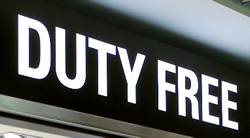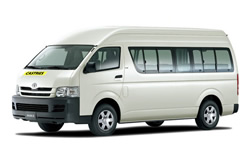Stay informed, join our newsletter today
+1 758 452-8941
 Saint Lucia is a volcanic and mountainous island with some broad, fertile valleys. It is located in the Caribbean, between the Caribbean Sea and the North Atlantic Ocean, north of Trinidad and Tobago, Grenada and Saint Vincent and the Grenadines and south of Martinique and Dominica;
Saint Lucia is a volcanic and mountainous island with some broad, fertile valleys. It is located in the Caribbean, between the Caribbean Sea and the North Atlantic Ocean, north of Trinidad and Tobago, Grenada and Saint Vincent and the Grenadines and south of Martinique and Dominica;
The island covers 616 km2 which is 3.5 times the size of Washington D.C. It has 158km of coastline, boasting beautiful black or yellow sand beaches. The climate is tropical, moderated by northeast trade winds; the dry season is from January to April, and the rainy season from May to August. Among the natural resources of Saint Lucia, you can find forests, sandy beaches, minerals (pumice), and mineral springs.
The highest point is Mount Gimie at 950m and the most spectacular scenery is the twin Pitons (Gros Piton and Petit Piton), striking cone-shaped peaks south of Soufriere, are one of the scenic natural highlights of the Caribbean, now among the UNESCO's classified sites. The natural hazards that rarely occur are hurricanes and volcanic activity.
 Saint Lucia counts 164,213 inhabitants (July 2004 estimate). The average age is 24.5 years, a very young population. There is a majority of black people (90%), mixed and East Indian people constitute 9% and the white people 1%. People here are very religious, and visiting mass can be a fun and interesting experience thanks to the gospel choirs and the cheerful crowds.
Saint Lucia counts 164,213 inhabitants (July 2004 estimate). The average age is 24.5 years, a very young population. There is a majority of black people (90%), mixed and East Indian people constitute 9% and the white people 1%. People here are very religious, and visiting mass can be a fun and interesting experience thanks to the gospel choirs and the cheerful crowds.
The main religions are Roman Catholic (90%), Anglican (3%), and other Protestant (7%). The official language for the island is English, but a majority of citizens speak and English version of French Creole they call Patois.
 Saint Lucia's government functions with a Westminster-style parliamentary democracy. The capital is Castries, and it has 11 administrative divisions called quarters or districts: Anse la Raye, Castries, Choiseul, Dauphin, Dennery, Gros-Islet, Laborie, Micoud, Praslin, Soufriere, and Vieux-Fort.
Saint Lucia's government functions with a Westminster-style parliamentary democracy. The capital is Castries, and it has 11 administrative divisions called quarters or districts: Anse la Raye, Castries, Choiseul, Dauphin, Dennery, Gros-Islet, Laborie, Micoud, Praslin, Soufriere, and Vieux-Fort.
The legal system is based on the English common law. Saint Lucia is part of the Commonwealth. The chief of State is Queen ELIZABETH II (since 6 February 1952), represented by Governor General Dame Pearlette LOUISY (since September 1997). The head of government is Prime Minister Sir John Melvin Compton (sworn in December 15).

According to a report from the Caribbean Development Bank (CDB): "Economic activity in Saint Lucia decelerated to 0.6% in 2018 from 3.7% in 2017. This was mainly due to a significant downturn in the construction sector. Headline inflation increased, while Central Government (CG) operations resulted in improved fiscal balances; and public debt as a percent of the gross domestic product (GDP) was slightly lower. Commercial bank credit to the private sector contracted in 2018, and the spread between lending and deposit rates widened. The external current account was in surplus, while gross reserves as a percentage of imports contracted."
The organisation also offered a positive outlook, forecasting that "economic growth of 3.0% is expected in 2019. Growth appears poised to increase in large part due to private and public sector construction programmes coming back on stream. Tourism activities are projected to expand and agriculture output will remain buoyant. Consequently, growth in ancillary economic activities, such as wholesale and retail and transport and storage, will likely trend upwards." From more in depth information and a downloadable PDF, please visit CariBank.org

The East Caribbean dollar (XCD) is Saint Lucia's national currency, and 1 dollar is divided into 100 cents. The exchange rate for the US dollar is fixed at EC$ 2.67 for US$1.00. The rates for other currencies fluctuate, as shown below: GBP £1.00 = EC$ 5.00 EUR €1.00 = EC$ 3.50 CAD $1.00 = EC$ 2.25
 The Country code is 1-758; The Island has payphones at your disposal, either with phone cards or with coins. Cable TV is widely accessible; Internet access is provided as well. Electricity 220 volts, 50 cycles AC (a few hotels are 110 volts, 60 cycles). Most sockets take 3 pin square plugs (UK standard) but some take 2 pin round plugs or flat American plugs, which are rarer. Adaptors are generally available at the hotels.
The Country code is 1-758; The Island has payphones at your disposal, either with phone cards or with coins. Cable TV is widely accessible; Internet access is provided as well. Electricity 220 volts, 50 cycles AC (a few hotels are 110 volts, 60 cycles). Most sockets take 3 pin square plugs (UK standard) but some take 2 pin round plugs or flat American plugs, which are rarer. Adaptors are generally available at the hotels.
 The duty free allowance into St. Lucia is 200 cigarettes or 250 grams of tobacco or 50 cigars, one litre of spirit or wine. Duty free shopping is available at Pointe Seraphine, La Place Carenage and at the departure lounge of Hewanorra Airport. Luxury items include Jewelry, Batiks, Giftware, Local Crafts, Liquor, Cigarettes and Cigars.
The duty free allowance into St. Lucia is 200 cigarettes or 250 grams of tobacco or 50 cigars, one litre of spirit or wine. Duty free shopping is available at Pointe Seraphine, La Place Carenage and at the departure lounge of Hewanorra Airport. Luxury items include Jewelry, Batiks, Giftware, Local Crafts, Liquor, Cigarettes and Cigars.
Entry Requirements Visitors must carry valid passports, except USA and Canadian citizens who possess valid return tickets and I.D., staying for less than 6 months. Visas are not required where the visitor is a citizen of the USA or a Commonwealth country, or where there is agreement for exemption between the home country and St. Lucia.
Departure Tax Departure Taxes for all passengers over 12 years old leaving the island by air cost EC $54 or US $22, and EC $30 or US $12 leaving by boat. Airports: Saint Lucia has two airports: The George F.L. Charles Airport in Castries (located to the northwest of the island, also called the Vigie Airport); it welcomes international flights from the Caribbean region.
The Hewanorra International Airport in Vieux Fort (southeastern tip of the island) welcomes long haul international flights from the US, and the UK and some Caribbean destinations. Saint Lucia has many roads, and four main roads called highways, going across and along the island. Most of the roads are paved, but beware of the potholes and potential damage caused by the weather.
 Castries and Vieux Fort are the main commercial marine ports. Saint Lucia has several marinas and harbors for yachts and ferryboats from Martinique: Marigot Bay is a breathtaking bay with a small marina, this is the anchor point for some chartered boats and catamarans; Ganter's Bay is Castries' marina for yachts and sailboats; the Castries port has a recently renovated pier for the large ferryboats that come in regularly from Martinique.
Castries and Vieux Fort are the main commercial marine ports. Saint Lucia has several marinas and harbors for yachts and ferryboats from Martinique: Marigot Bay is a breathtaking bay with a small marina, this is the anchor point for some chartered boats and catamarans; Ganter's Bay is Castries' marina for yachts and sailboats; the Castries port has a recently renovated pier for the large ferryboats that come in regularly from Martinique.
Rodney Bay Marina is the largest yacht and sailboat marina of the island; it is the international host for the annual ARC (Atlantic Rally for Cruisers) rally that departs from Las Palmas in the Canary Islands in late November and arrives in Saint Lucia in early December.
 Taxis: It is very easy to find a taxi on the island, and they offer a variety of services, from airport transfers to day tours around the island. Airport transfers cost US$65 from the Hewanorra International Airport to Rodney Bay, US$20 from the George F.L. Charles Airport. Day tours to the south of the island may vary according to the drivers. Tip: to recognize taxis, all have red license plates, with the letters TX and a 3 to 4 digit number.
Taxis: It is very easy to find a taxi on the island, and they offer a variety of services, from airport transfers to day tours around the island. Airport transfers cost US$65 from the Hewanorra International Airport to Rodney Bay, US$20 from the George F.L. Charles Airport. Day tours to the south of the island may vary according to the drivers. Tip: to recognize taxis, all have red license plates, with the letters TX and a 3 to 4 digit number.
Buses: Public buses are generally 14-seater vans, and they all depart from Castries towards the main towns of the island. Buses running from Castries to Gros Islet drive past Rodney Bay. These buses follow the route called Route 1A, and a one-way trip Rodney Bay – Castries will cost you EC$1.75. Public buses are easily recognizable, they have a yellow sticker on the front indicating the route and they have a green license plate.
Many countries have diplomatic representation in Saint Lucia. According to the Government of Saint Lucia website, as at August 2019 these include:
Argentina:
Embassy of the Argentine Republic: First Floor, Mardini Building, Rodney Bay, Gros Islet | P O Box BW467 | LC01 601 | Telephone: 458-5900 | Email:eluci@mrecic.gov.ar | Website: www.eluci.gov.ar/en
Brazil:
Embassy of the Federative Republic of Brazil: 4th Floor, Mardini Building, Rodney Bay, Gros Islet | P. O. Box CP6136 | Tel: (758) 450-1671 | Email: brasemb.castries@itamaraty.gov.br | Website: castries.itamaraty.gov.br
Cuba:
Embassy of Cuba: Rodney Heights, Gros Islet | Tel: 758 458 4665 | Email: embacubasantalucia@candw.lc
Denmark:
Royal Danish Consulate | Rodney Bay Village, Gros Islet | Box RB2500 | Tel: 758 450 0190 Fax: 758 450 0002 | E-mail: royalknight@candw.lc
France:
Embassy of France to the OECS: Nelson Mandela Drive, Vigie, Castries | PO Box 937 | Tel: 758 455 6060 | E-mail: frenchembassy@candw.lc
Germany:
Honorary Consul of the Federal Republic of Germany: Mrs. Karolin Gueler Troubetzkoy | P.O. Box 257 Soufriere, St. Lucia | Tel: 758 459-7977 | Email: soufriere@hk-diplo.de
Libya:
Embassy of Libya: Rodney Heights, Gros Islet | P. O. BW 360 | Tel: (758) 458 4202 | Email: Libya_emb_lc@foreign.gov.ly
Mexico:
Embassy of Mexico: Vigie, Castries | Tel: (758) 451- 4254/451- 4257/452-8482 | Email: mexicanembassy@candw.lc
Morocco:
Embassy of the Kingdom of Morocco: c/o Level 4, Bay Walk Mall, Rodney Bay, Gros Islet | Tel.: (758) 452-0925(758) 452-4499 / (758) 452-4924 | Email: embmorslu@maec.gov.ma
Sweden:
Consulate of Sweden: See Danish Consulate
United Kingdom:
British High Commission: NIS Building, Waterfront, Castries | Box 227 | Tel: 758 452 2484 | E-mail: britishhc@candw.lc
Venezuela:
Embassy of the Bolivarian Republic of Venezuela: Vigie, Castries | Tel: (758) 452 4033 | Email: vembassy@candw.lc
Taiwan:
Embassy of the Republic of China (Taiwan): Reduit Beach Avenue, Rodney Bay, Gros Islet | P. O. Box RB2378 | Tel: (758) 452-8105 / 450-0400 | Email: taiwanewmbassy@gmail.com
More information about international consular representation in Saint Lucia is available at Govt.lc.